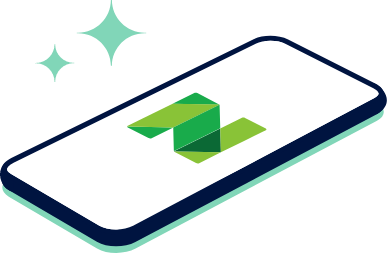What Gig Workers Need to Know About Taxes

Many, or all, of the products featured on this page are from our advertising partners who compensate us when you take certain actions on our website or click to take an action on their website. However, this does not influence our evaluations. Our opinions are our own. Here is a list of our partners and here's how we make money.
If you became a gig worker during the pandemic, beware: Your taxes just got more complicated.
Gig work — Uber driving, Instacart shopping, Amazon Flex delivery and so on — is on-demand, freelance work that’s typically taxed as self-employment. Instead of having an employer withhold money from your paycheck, you’re an independent contractor who is expected to pay taxes on your gig income as you earn it. You’ll also owe a larger share of your pay to Social Security and Medicare taxes.
On the plus side, you may have more opportunities to deduct your expenses and save for retirement than you do as a W-2 employee.
Self-employment taxes are a mystery to many
About half of U.S. adults say they don’t have a good understanding of the tax implications of freelance or gig work, according to a recent NerdWallet survey. Yet this type of work was a growing part of the U.S. economy even before the pandemic upended people’s work lives.
A survey last summer by Upwork, a freelance job platform, found 59 million Americans — or 36% of the U.S. labor force — had freelanced in the previous 12 months. But COVID-19 lockdowns led to big changes in the composition of the freelance fleet. Millions had to quit during the pandemic, often because of lack of work or fear of contracting the virus. At the same time, massive unemployment and a surge in demand for home delivery led millions of others to seek out freelance work for the first time.
Stress less. Track more.
See the full picture: savings, debt, investments and more. Smarter money moves start in our app.
Gig work tax basics
Regular employees get W-2s in January from their employers showing how much they earned the previous year and how much was withheld in taxes. The self-employed, by contrast, may get tax forms known as 1099s showing how much a company paid them. Even if you don’t get a 1099, though, you’re expected to file a tax return and report all your self-employment income if your net earnings are $400 or more. Net earnings is basically the income you earn from your self-employment minus allowed deductions.
You may be required to send out 1099s if you paid $600 or more to any person or company as part of your business. The deadline to file those was Feb. 1.
You’re also going to owe self-employment tax. Employees typically pay 6.2% of their income in Social Security taxes and 1.45% in Medicare taxes, while their employers pay an equal amount. But if you’re your own employer, you typically pay both halves of those taxes: 12.4% to Social Security and 2.9% to Medicare, for a total of 15.3%.
What you can deduct
Internet, phone service, transportation, health insurance, a home office — all these and more are potentially deductible, at least in part, if they are “ordinary and necessary” parts of running your business.
But you can go too far. You may need cell service for the app-based driving or delivery work you do, for example, but you can’t deduct 100% of the cost — only the portion that’s related to your gig work. If 25% of your phone use can be attributed to your gig, then you can deduct 25% of the cost.
The 15.3% self-employment tax mentioned above is also deductible. You can deduct half of what you pay in self-employment tax when figuring your income taxes.
You also can deduct retirement plan contributions. While it’s generally too late to set up a solo 401(k) or a SIMPLE for 2020, you can open and contribute to a SEP IRA until your tax filing due date: April 15 plus extensions.
Avoiding penalties
You’ll typically avoid underpayment penalties if you end up owing the IRS less than $1,000. You’ll also be penalty-proof if your 2020 tax payments are at least 90% of what you ultimately owe for the year, or 100% of what you paid in 2019, whichever is smaller. (But if your adjusted gross income in 2019 was more than $150,000 — or $75,000 for married filing a separate return — that threshold rises to 110% of what you paid in 2019.)
Don’t let the fear of owing money keep you from filing, however. The IRS has payment plans, and its penalties for failing to pay on time are far less than those for failing to file a return on time.
Tax software can guide you through the process, but consider hiring a tax professional to help you if this is the first time you’ve filed as self-employed. There are enough gray areas and complications to gig work taxation that having help from a pro can pay for itself.
This article was written by NerdWallet and was originally published by the Associated Press.
Article sources
NerdWallet writers are subject matter authorities who use primary,
trustworthy sources to inform their work, including peer-reviewed
studies, government websites, academic research and interviews with
industry experts. All content is fact-checked for accuracy, timeliness
and relevance. You can learn more about NerdWallet's high
standards for journalism by reading our
editorial guidelines.
Related articles







